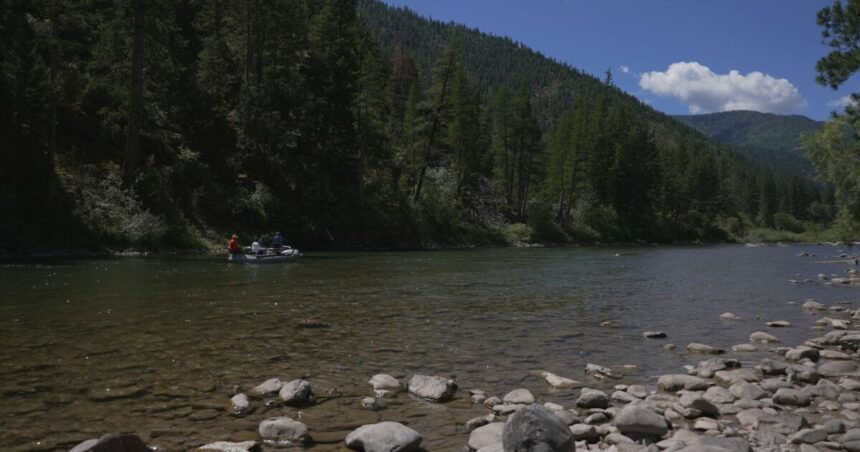BONNER — The Blackfoot River is currently facing extreme drought conditions, causing ripple effects throughout the watershed.
“We’re currently in exceptional drought conditions, categorized as D4 drought. We are the only location in the entire Western US experiencing D4 drought conditions,” stated State of Montana Climatologist Kelsey Jencso.
The low snow-pack and snow melt from this winter’s El Niño have led to a severe drought in Western Montana’s Blackfoot Valley.
For the Blackfoot Challenge, a conservation group acting as stewards for the area, the weather conditions prompted the early implementation of their drought plan, which includes voluntary measures for anglers and recreationists on the water.
“The primary trigger for significant water conservation action is when the river flow reaches 700 cubic feet per second. This year, we hit that trigger on July 11th,” shared Blackfoot Challenge Water Steward Clancy Jandreau.
Although drought is not uncommon in the Blackfoot region, the early onset of the drought this year is causing challenges.
Danny Iverson and his family, who have been cattle ranching in Potomac for five decades, have experienced dry, hot seasons in the past.
“This is the most severe drought I’ve experienced in terms of stream flow and precipitation,” Iverson remarked. “It’s extremely stressful for ranchers during a drought year. Psychologically, it’s very challenging.”
Iverson closely monitors the weather to stay prepared, as drought increases workload and reduces income.
To assess soil health, Iverson utilizes the Blackfoot Challenge’s soil monitoring program.
Jandreau mentioned that one method of collecting soil data is by using a specialized tube with a porous ceramic tip inserted into the soil.
“By measuring the pressure as the soil either retains or releases water, you can gauge the moisture content in your soil,” explained Jandreau.
Iverson highlighted the importance of implementing new preparedness methods, which have significantly benefited his ranch during difficult years. He also recommended exploring innovative high-tech solutions for other ranchers.
According to State Climatologist Kelsey Jencso, the frequency and severity of drought are expected to increase in the future.
“We anticipate experiencing these conditions more frequently. It is the community-based initiatives that Montana is known for that will help us navigate through these challenging situations,” he emphasized.
More local news from KPAX





